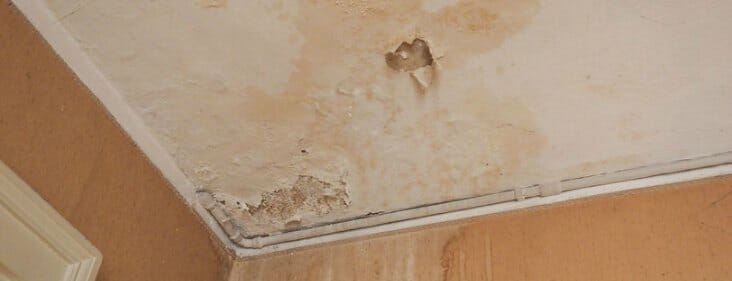Spot Six of The Commonest Triggers for Leakage Within Your Residence
Spot Six of The Commonest Triggers for Leakage Within Your Residence
Blog Article
This post down below pertaining to Top Causes of Home Water Leaks is unquestionably stimulating. Give it a go and make your own personal results.

Leaks not just trigger waste of water but can additionally trigger unnecessary damages to your home and promote undesirable organic growth. By looking as well as recognizing for daily scenarios that create leakages, you can shield your house from future leaks and unneeded damage.
Instant temperature level changes.
Extreme temperature level changes in our pipes can trigger them to increase and also get unexpectedly. This expansion and tightening may create cracks in the pipes, particularly if the temperature are below cold.
Rusty water supply
This could be the reason of staining or bending on your water pipes. If our plumbing system is old, take into consideration replacing the pipes because they are at a greater threat of deterioration than the newer versions.
Malfunctioning Pipe Joints
Pipeline joints can wear away over time, resulting in water leakages. If you have noisy pipes that make ticking or banging noises, particularly when the hot water is transformed on, your pipeline joints are most likely under a great deal of pressure.
Encroaching origins
Many water leakages begin outside your house instead of inside it. If you see an unexpected reduction in water pressure, state in your tap, take some time to go out and also analyze your lawn. You may notice wet patches or sinkholes in your lawn, which could mean that tree origins are getting into water lines creating water to seep out. You can have your plumber check for invasion, specifically if you have trees or shrubs near your residential or commercial property.
Poor Water Connectors
Sometimes, a leakage can be brought on by loosened pipes as well as pipelines that provide your home appliances. Typically, moving is what creates the loosened water Connections. You could locate when it comes to a cleaning maker, a hose pipe may spring a leak as a result of trembling during the spin cycle. In case of a water connections leakage, you may notice water running directly from the supply line or pools around your devices.
Obstructed Drains
Clogged drains may be irritating as well as inconveniencing, however they can often wind up causing an overflow leading to burst pipes. Keep removing any type of materials that may drop your drains pipes that can block them to stay clear of such troubles.
All the above are root causes of leaks however not all water leakages arise from plumbing leakages; some leakages might come from roof covering leakages. All leaks ought to be fixed right away to avoid water damages.
Leakages not only trigger waste of water however can likewise trigger unneeded damage to your home and promote unwanted natural development. By recognizing and looking for daily scenarios that create leakages, you can shield your residence from future leaks and unnecessary damage. Today, we will certainly look at six leakage creates that might be triggering your pipelines to trickle.
At times, a leak can be created by loosened hose pipes and also pipes that supply your home appliances. In situation of a water links leakage, you may discover water running straight from the supply line or puddles around your devices.
How To Check For Water Leak In Your Home
How To Check for Leaks
The average household's leaks can account for nearly 10,000 gallons of water wasted every year and ten percent of homes have leaks that waste 90 gallons or more per day. Common types of leaks found in the home are worn toilet flappers, dripping faucets, and other leaking valves. These types of leaks are often easy to fix, requiring only a few tools and hardware that can pay for themselves in water savings. Fixing easily corrected household water leaks can save homeowners about 10 percent on their water bills.
To check for leaks in your home, you first need to determine whether you're wasting water and then identify the source of the leak. Here are some tips for finding leaks:
Take a look at your water usage during a colder month, such as January or February. If a family of four exceeds 12,000 gallons per month, there are serious leaks.
Check your water meter before and after a two-hour period when no water is being used. If the meter changes at all, you probably have a leak.
Identify toilet leaks by placing a drop of food coloring in the toilet tank. If any color shows up in the bowl after 10 minutes, you have a leak. (Be sure to flush immediately after the experiment to avoid staining the tank.)
Examine faucet gaskets and pipe fittings for any water on the outside of the pipe to check for surface leaks.
Undetected water leaks can happen without the home or business owner even realizing. If you suspect a water leak, but not able to find the source. It is time to contact a professional water leak detection service, The Leak Doctor.
How To Find a Water Leak In Your Home
https://www.leakdoctor.com/blog/How-To-Check-For-Water-Leak-In-Your-Home_AE197.html

Do you appreciate reading up on How to Find Water Leaks? Make a comment directly below. We would be pleased to know your opinions about this article. In hopes that you visit us again in the near future. Are you aware of someone else who is excited about Most Common Causes of Leaky Pipes? Why not share it. We love reading our article about How to detect water leaks in your home.
Plumbing crisis? Reach out! Report this page